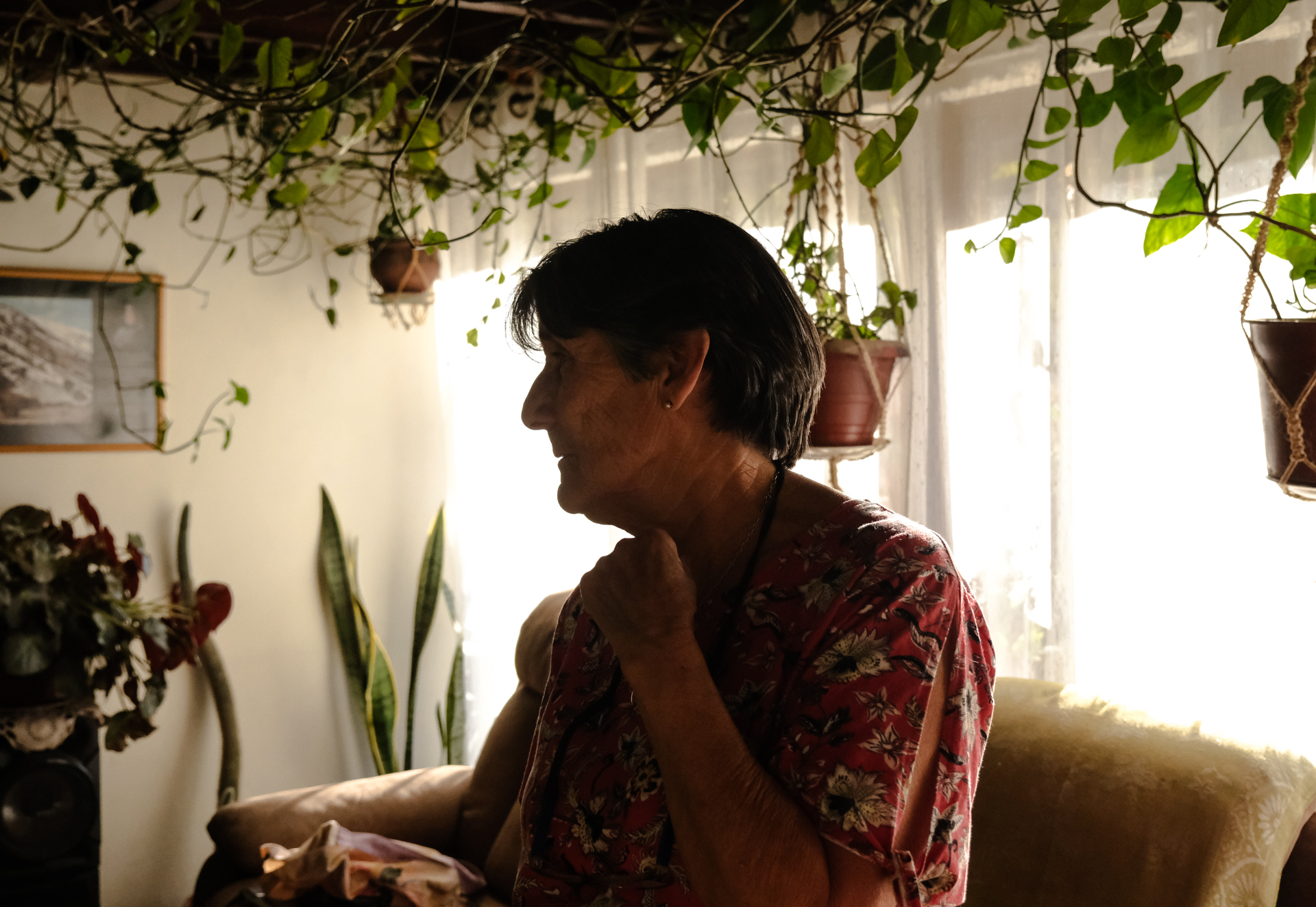
Photos by Sachi Kitajima Mulkey. Audio Recordings by Laura Isaza.

Photos by Sachi Kitajima Mulkey. Audio Recordings by Laura Isaza.
The Cajón del Maipo is an arid, once snowcapped region of the Chilean Andes, 40 miles north of Chile’s capital city of Santiago. There, a series of hamlets tucked around the mountains and valleys are home to a lively community of small-scale agricultural and ecotourism businesses. In recent years, the effects of melting glaciers in the region have exacerbated a historical drought and threatened local water security.
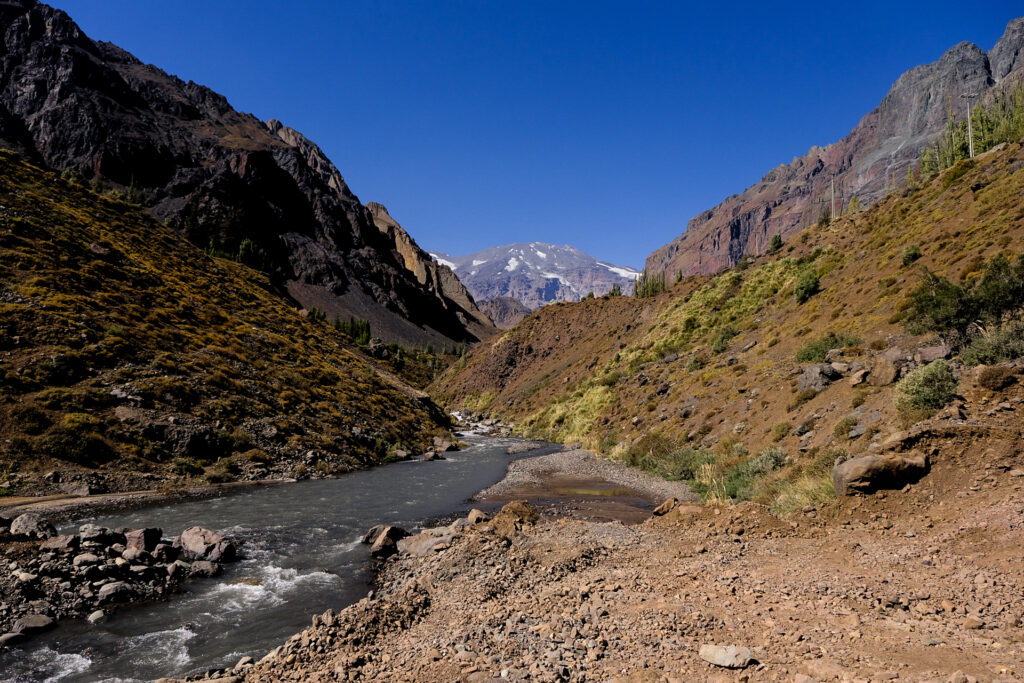
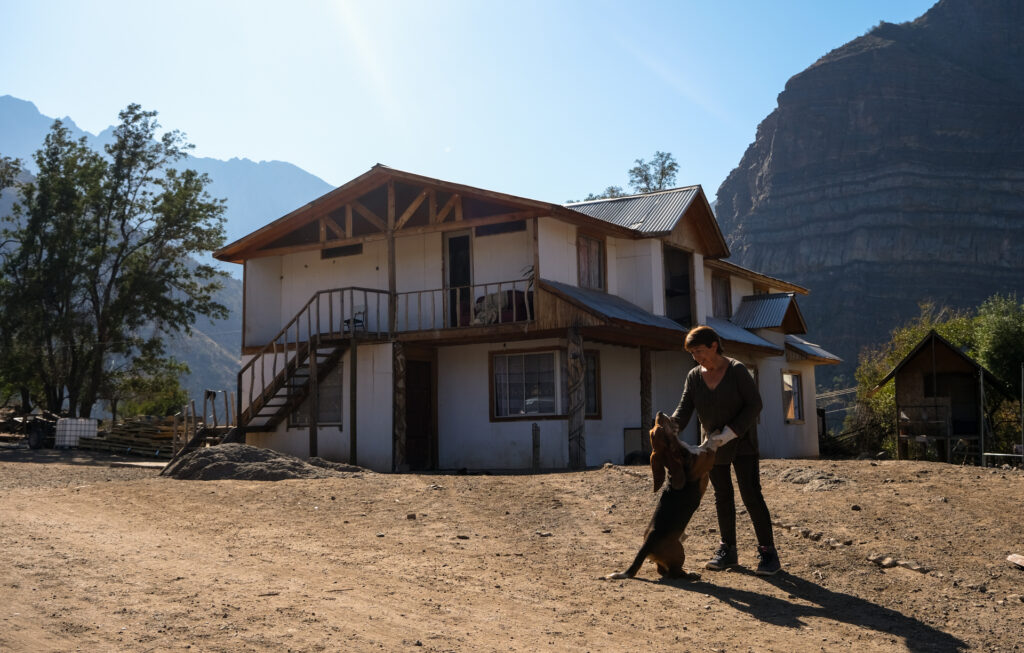
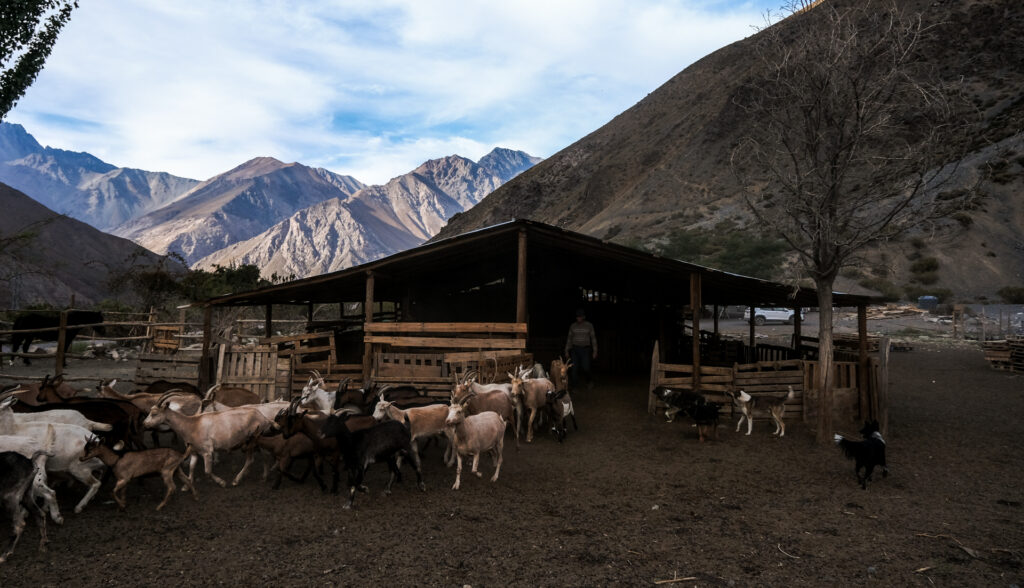
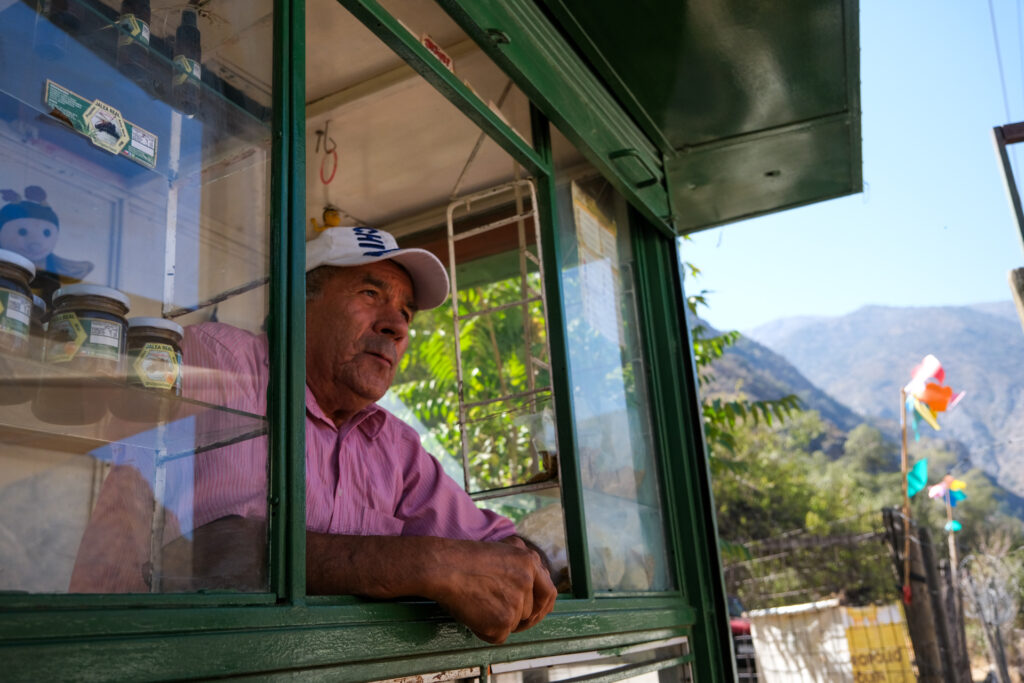
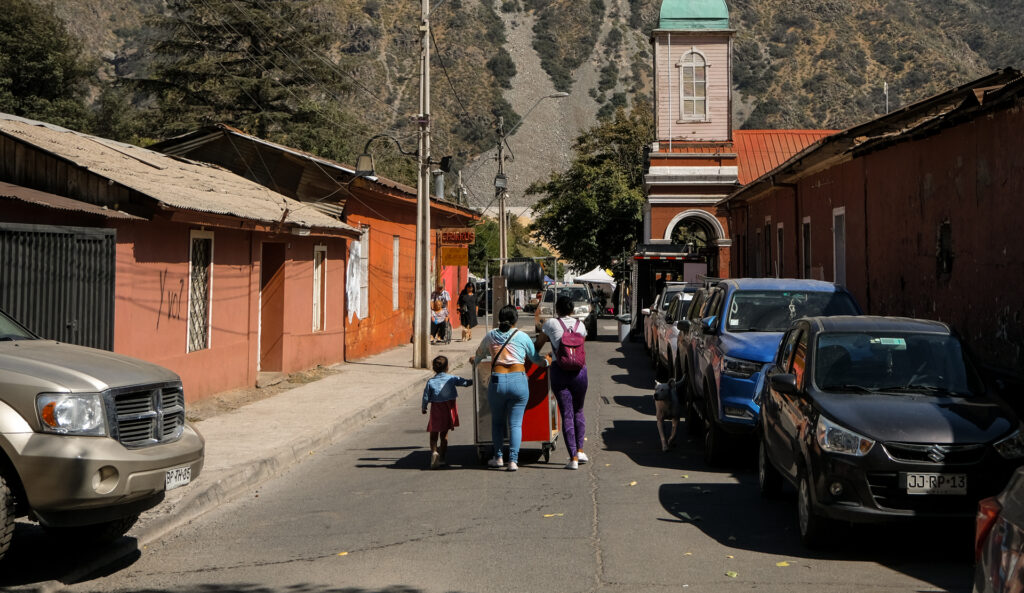
In 2013, a new hydroelectric project, named Alto Maipo, began construction along the Río Maipo, a large glacier-fed river in the Cajón del Maipo valley. While the valley is already home to a long-standing network of hydroelectric plants, the company, AES Gener, promised to produce over four times the current energy supply by diverting rivers through 43.5 miles of tunnels dug beneath the mountains.
After being announced, the project was met with swift backlash from community and environmental leaders. Now, years after protests have died down, the project remains internationally controversial and plagued by operational problems, such as glacial retreat reducing the water flow needed to provide the energy for the project.
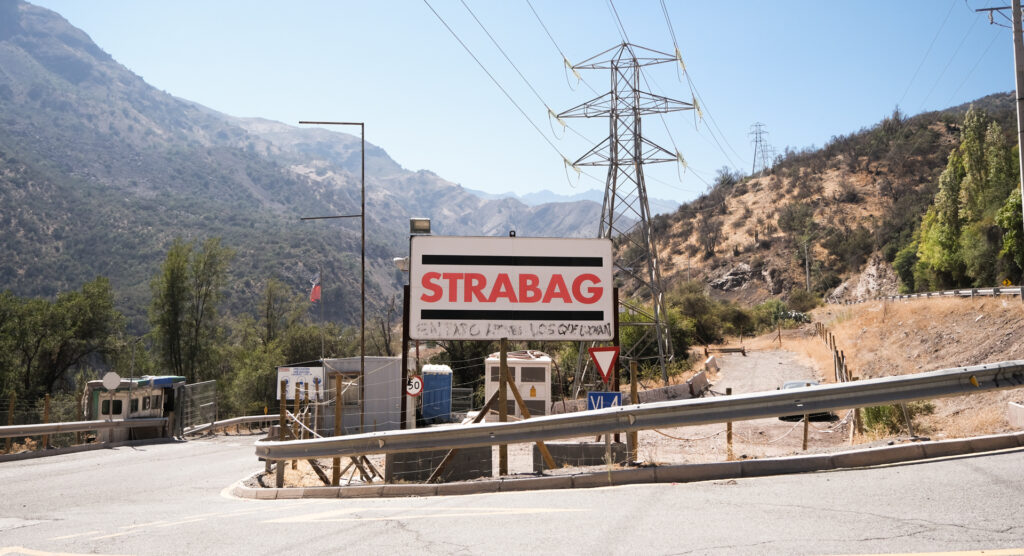
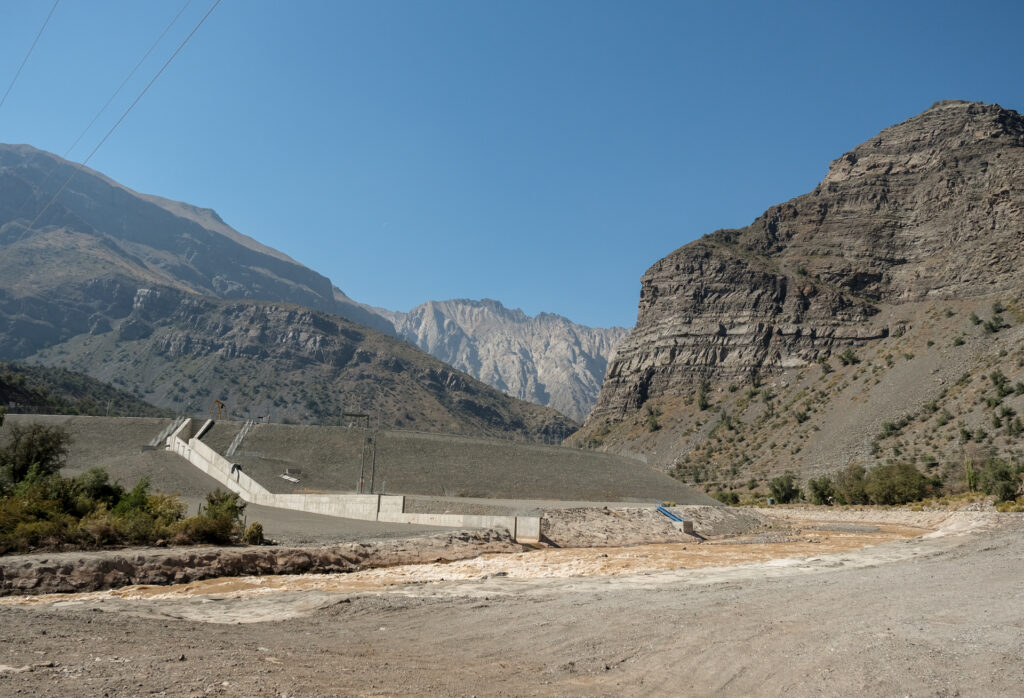
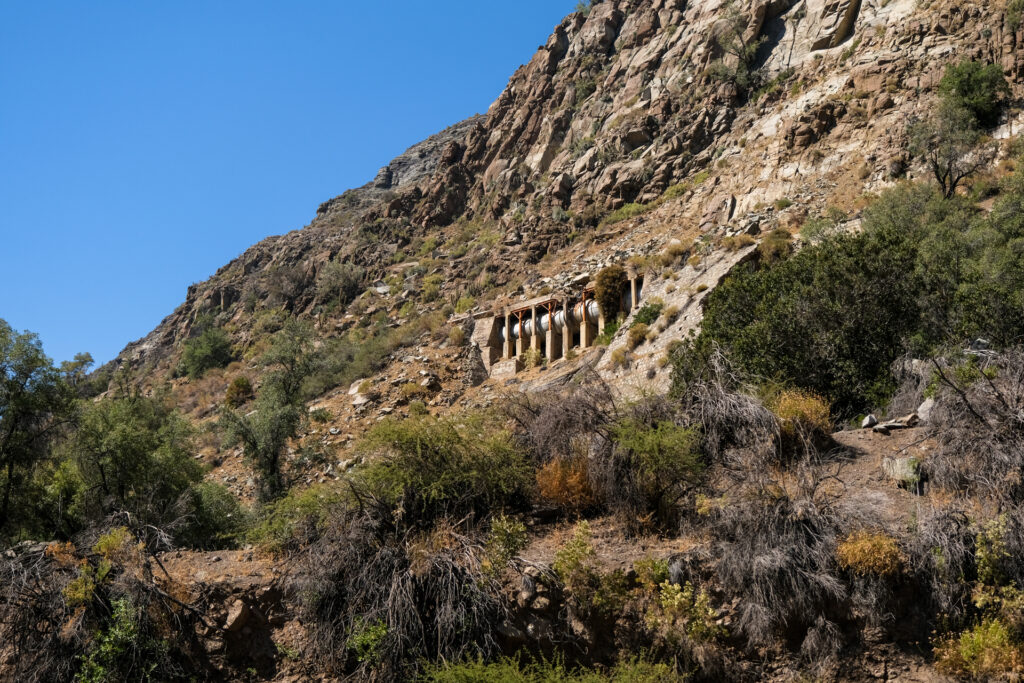
The greater regional hydroelectric system generates energy through a broad series of underground tunnels that divert water from naturally occurring rivers before being returned to the surface. Alto Maipo’s tunnels span over 41 miles and source millions of gallons of water from three rivers: the Río Volcán, the Río Yeso, and the Río Colorado.
Water travels through the tunnels before being deposited into the larger Río Maipo, several miles downstream of where the water would naturally flow. The energy produced across the Cajón del Maipo is sent to the Santiago metropolitan region
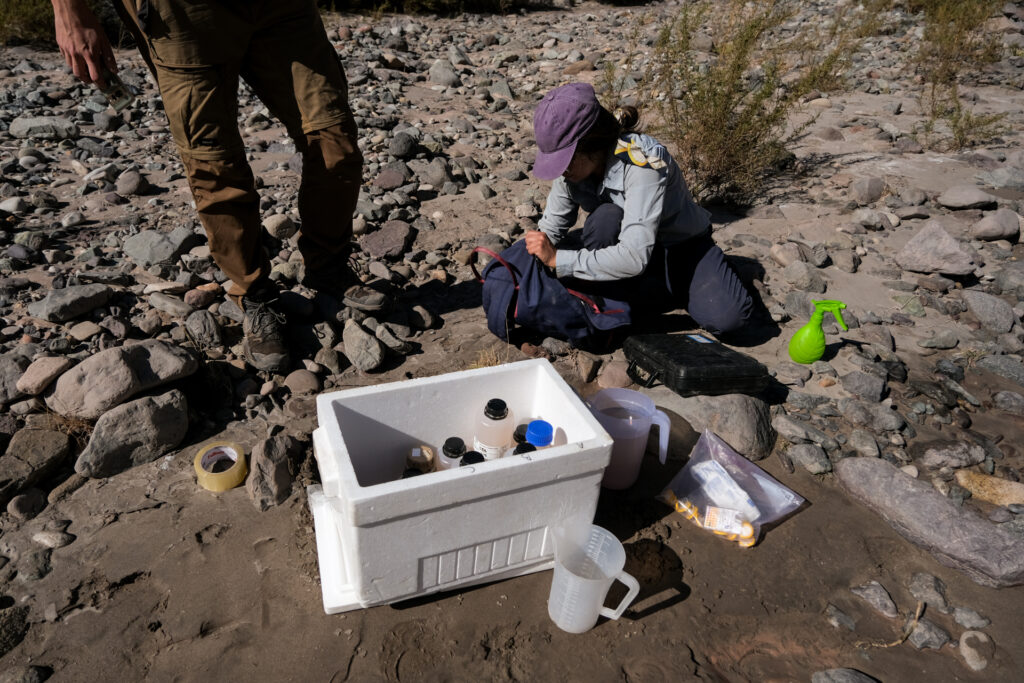
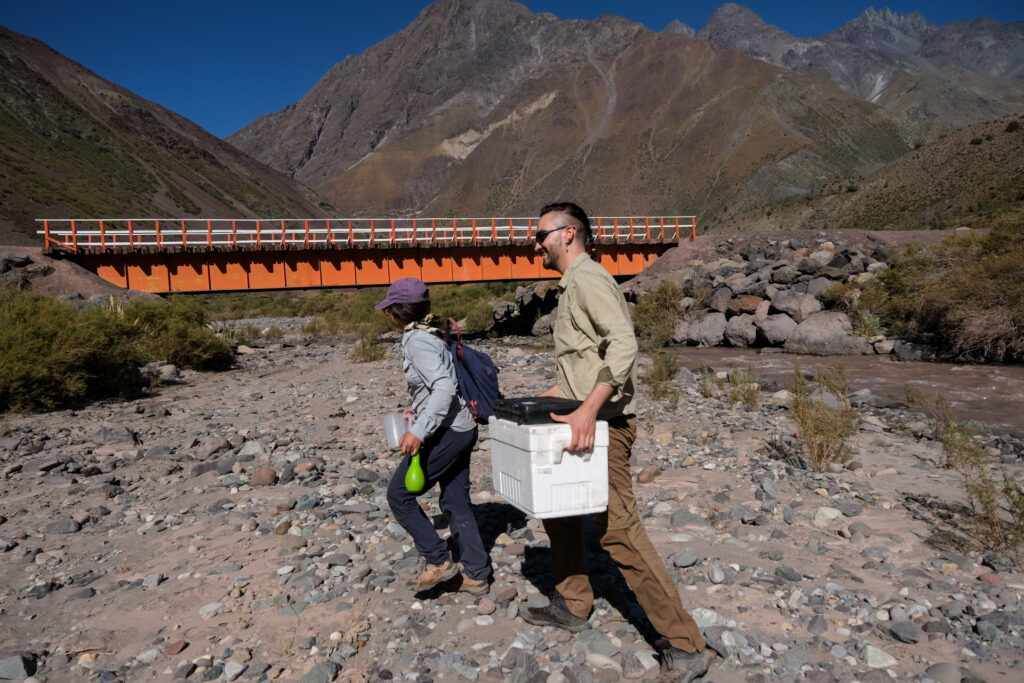
TRANSLATION: Fundamentally, the Olivares glacier field is one of the principle glacier reserves of uncovered glaciers in the region. But we have to understand that in the whole Maipo basin, there are over 900 glaciers. Of those, many are rock glaciers. And all of them are an important part of the water reserves for the region of Santiago.
Francisco Ferrado, Glaciologist at the University of Chile
The water, which consists largely of glacier melt, is contaminated from mining and sediment from the hydroelectric diversion process, according to researchers. By redirecting surface water to skip roughly 100 km (about 62 miles) of the Cajón del Maipo, where communities depend on rivers for water security, the impacts of climate-change-fueled drought in the region are exacerbated. This effects not only households and agriculture, but also the surrounding nature.
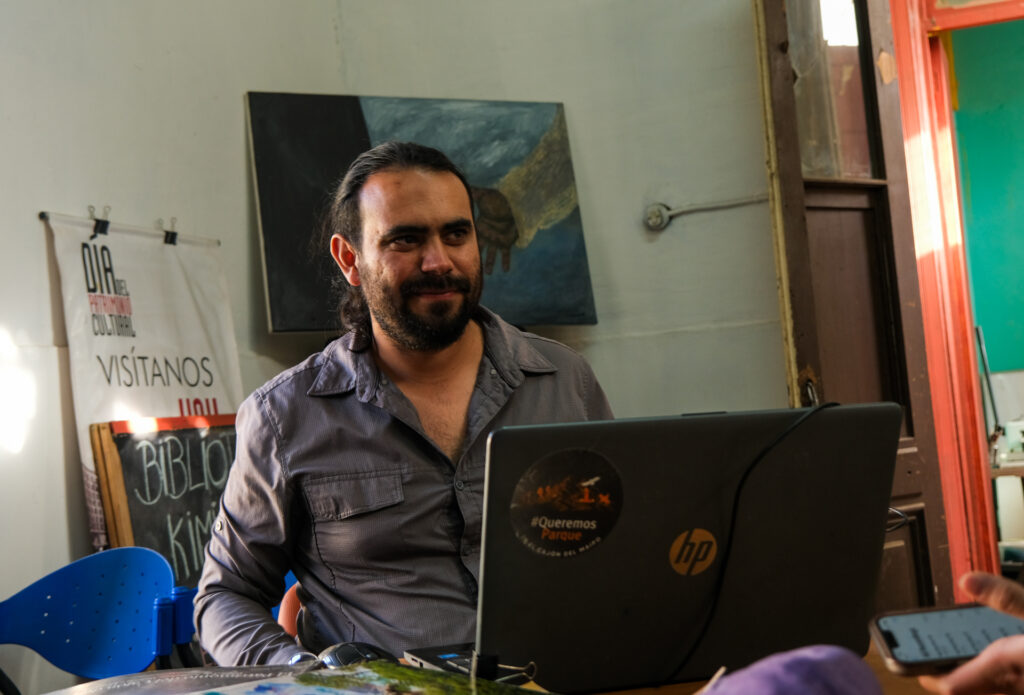
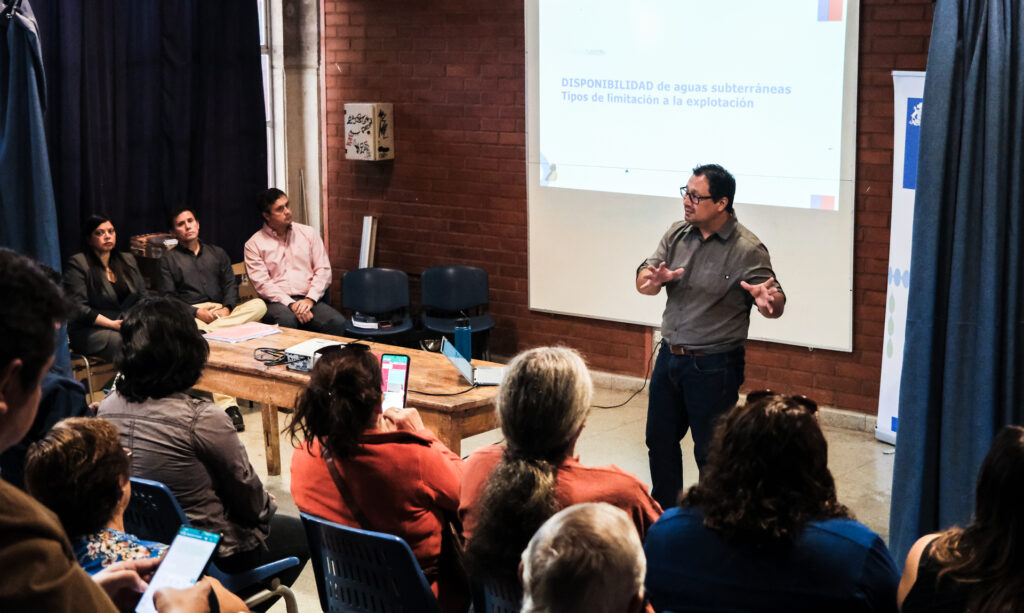
TRANSLATION: It’s what you call a sacrifice zone. The truth is, in the end, it’s a territory that has been sacked by international corporations whose activities have very harmful impacts on the environment and communities. Mining is one of the greatest threats – in the end, it’s like the saying, “bread for today, hunger for tomorrow.” That leaves very significant damage. They take the water out of the rivers, they take the resources, and they leave. That’s the reality.
Benjamín Busto, local environmentalist
Locals say the construction of Alto Maipo came at a cost to local groundwater and marred the landscape of nearby townships El Alfalfal and Los Maitenes permanently. The Maipo basin provides 70% of the Santiago Metropolitan Region’s drinkable water, and 90% of its irrigation water. This is increasingly critical as a historic megadrought has swept through Chile in the last decade, threatening national food and water security.
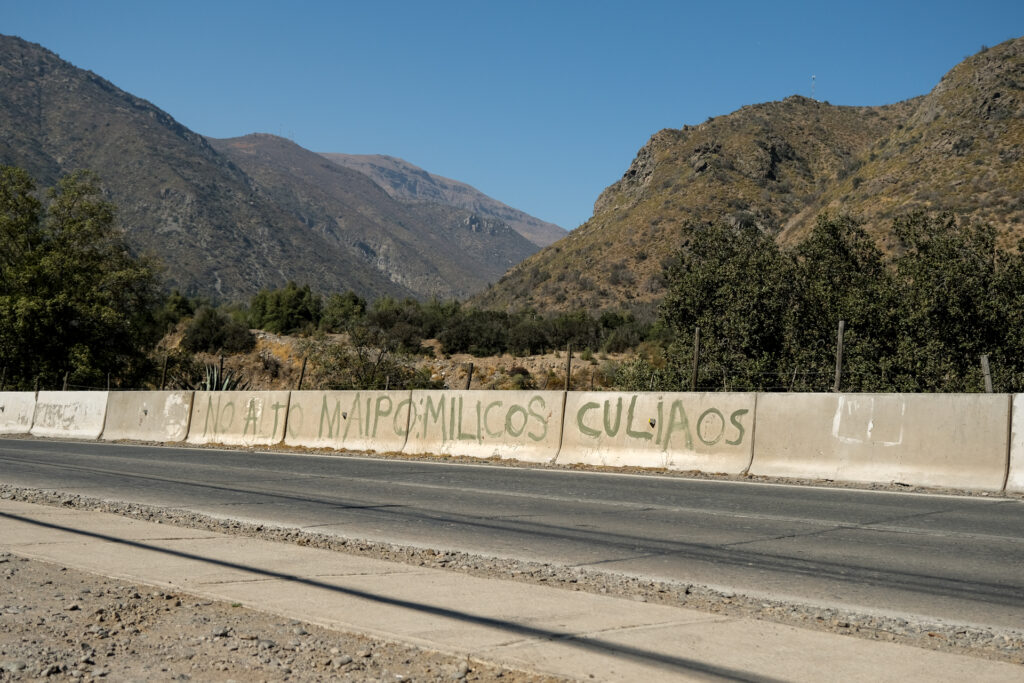
Resistance to Alto Maipo turned the region into the center of a battle over water rights. Between the project’s announcement in 2013 and 2018, “No Alto Maipo” activists came to the Cajón del Maipo from across Chile to protest, saying that the project compromised an already fragile water supply. International groups, such as the outdoor gear company Patagonia, supported the movement and coined slogans such as “Salvemos El Maipo, or “Save the Maipo.”
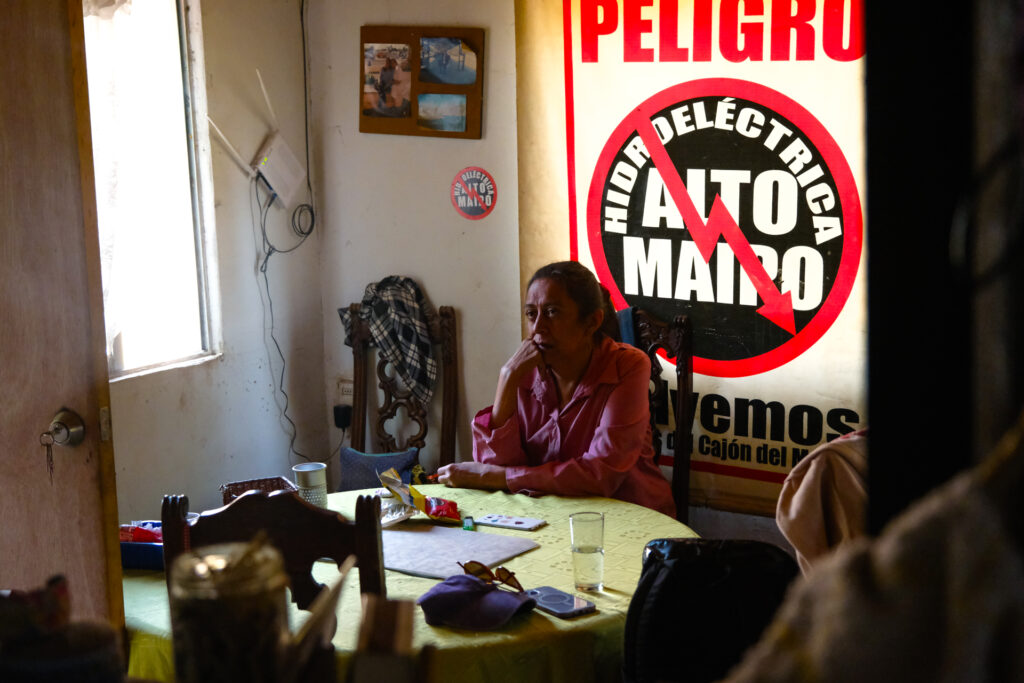
TRANSLATION: At the beginning, the meetings were huge. A hundred people, eighty, or more in the beginning. This conflict is turning 16 years old. We live in a society that wants immediate results, and environmental conflicts are long. We don’t always – we almost never win. So, maintaining energy and the hope of winning – beating the state, beating the corporation – was very complicated. And in the end, four or five of us ended up sustaining a tremendous campaign.
Marcela Mella, local activist
Initially, “No Alto Maipo” meetings and protests drew hundreds. At the height of the public campaign, Mella was invited to speak at United Nations. But eventually, Mella said, only a handful of people would show up. Sometimes, the protesters were harassed. “My daughters got scared. They would cry because the [Alto Maipo] workers would shout things at me,” she said.
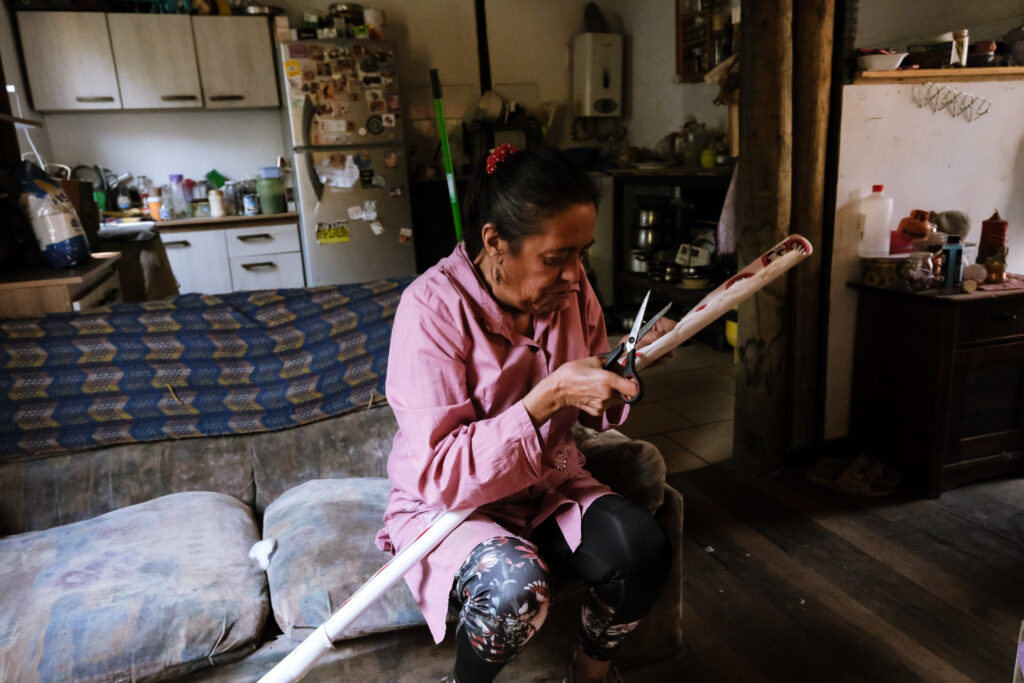
TRANSLATION: It’s also not convenient that such a big responsibility, like leading a movement, falls on two to three people – it requires more backing. It’s difficult in a capitalist system like the one in Chile for people to have the confidence to continue the movement.
Marcela Mella
During protests, journalists uncovered cyber-espionage on Mella’s social media accounts by AES Gener, the company behind Alto Maipo; no charges were ever filed. In 2021, she ran for local office but lost. A year later, her appointment as a provincial presidential delegate for President Boric was cut short, a consequence, she says, of disagreeing with her colleagues and the president himself. Now, she says she has not found work for five months and has been left in poverty.
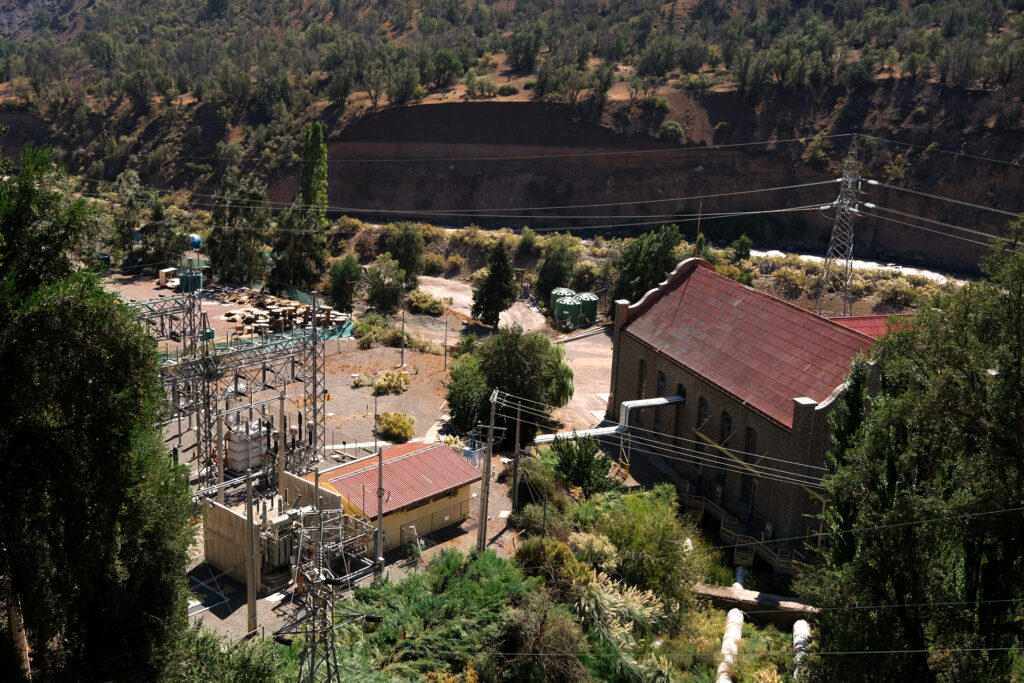
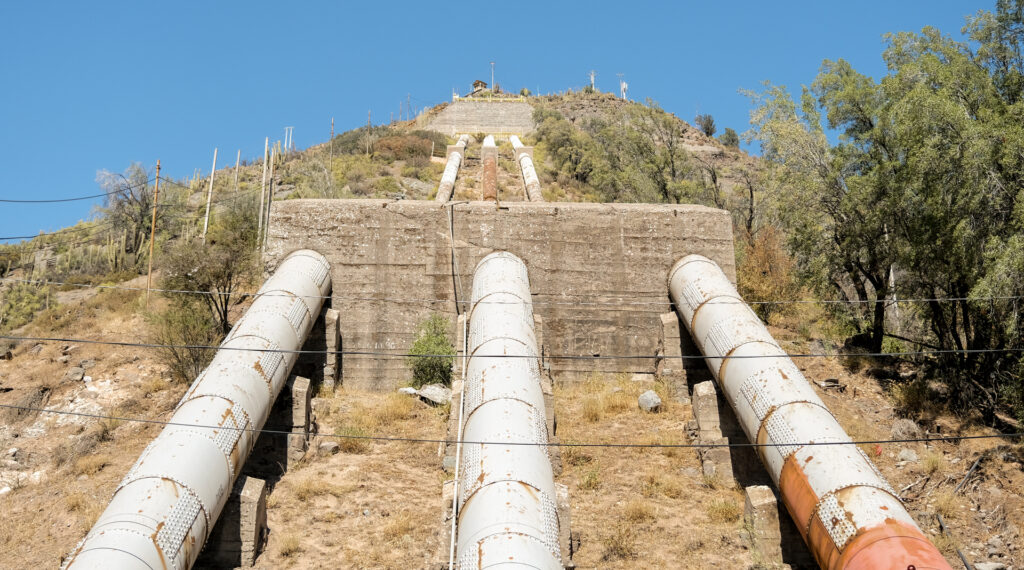
In one town at the center of the Alto Maipo construction, El Alfalfal, the controversy is fueled by the tangled history of the region. In 1962, Chile entered a period of agricultural reform, which granted the community titles to the land, but this didn’t last long. In 1973, Augusto Pinochet began his military dictatorship with a U.S.-backed coup. During the Pinochet takeover, land ownership was stripped from the community.
Today, decades after the end of the dictatorship, the resident’s land titles have not been restored. According to El Alfalfal residents, AES Gener promised that if the township supported the development of Alto Maipo, the company would support them in regaining their land titles.
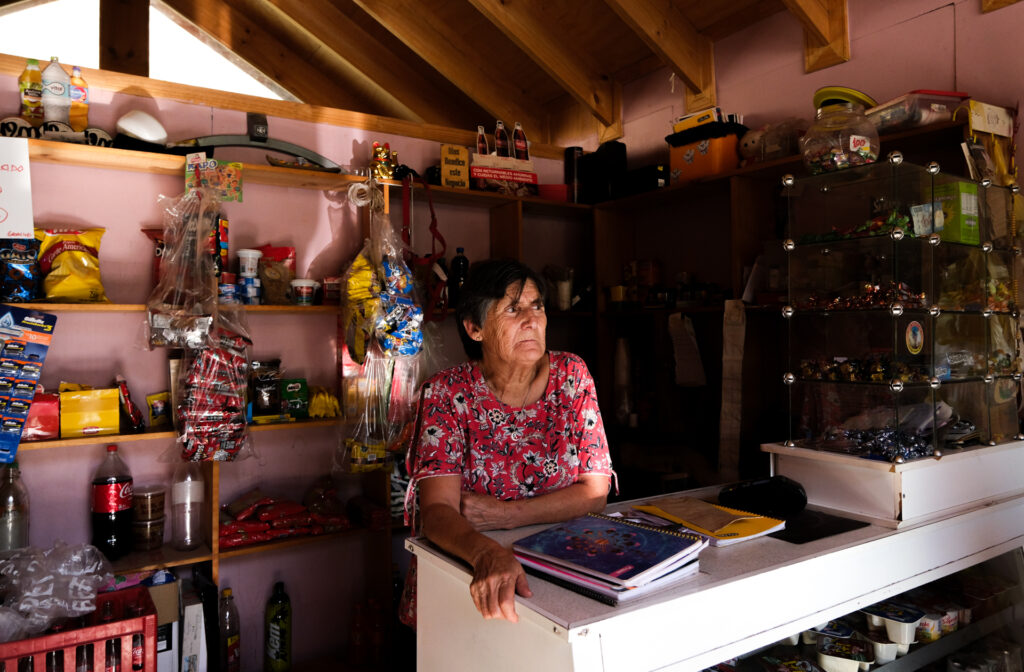
TRANSLATION: That was our biggest dream, our land titles.
Victoria Ortega, resident of El Alfalfal and community spokesperson
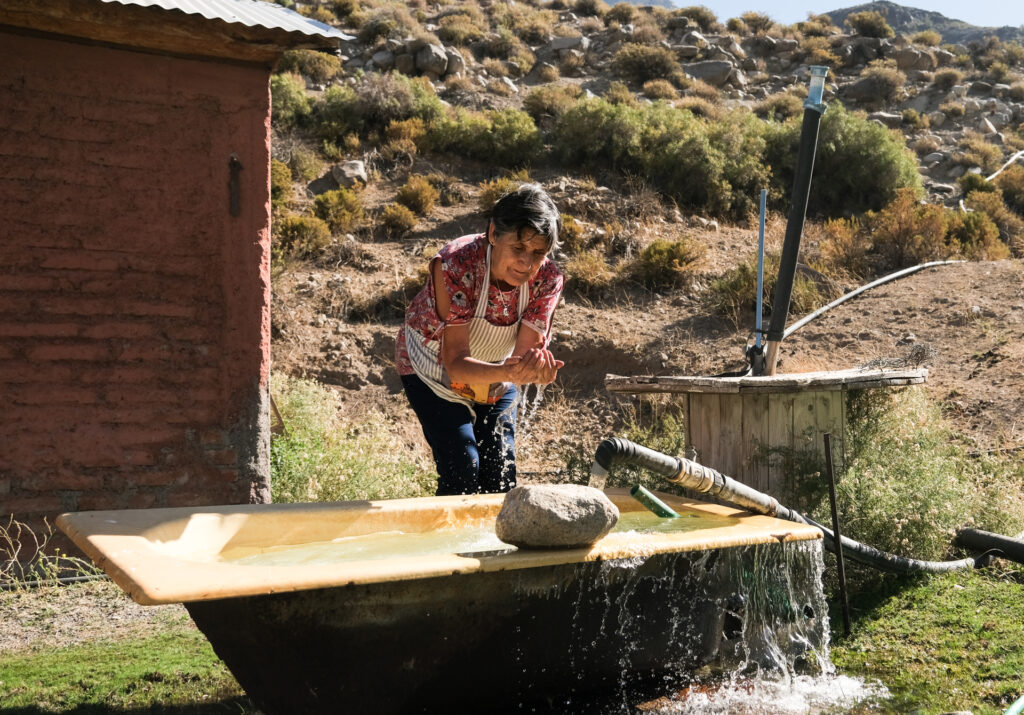
In 1983, Ortega’s mother was one of 29 people that died in a devastating mudslide that sent the side of a mountain hurtling downward, destroying everything in its path and marking the region as high-risk for landslides and flash floods. Ortega says that Bienes Nacionales, a land ministry of the Chilean government, prevents development in areas with high risks of landslides.
These regulations would require AES Gener to fortify the mountainside around their home. Locals say this was part of the company’s promise to the town. Ortega says that although the construction has since finished, no such action ever materialized. For now, the residents of El Alfalfal do not own the land they live on and in their view, Alto Maipo betrayed their trust.
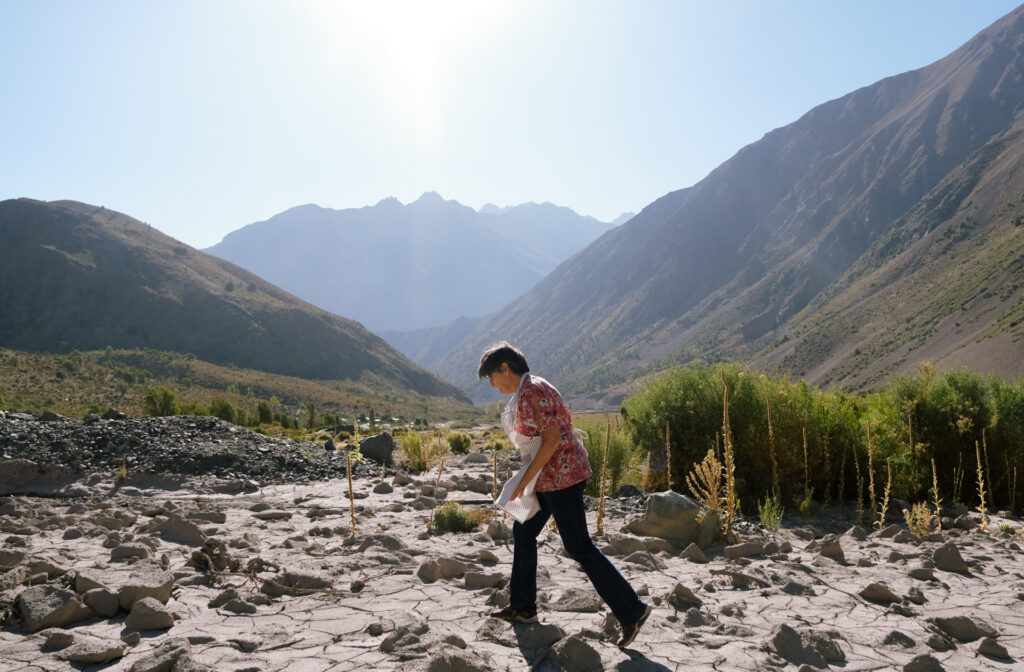
TRANSLATION: That’s nature. And there, my mother died on the 29th of November in ‘87.
Victoria Ortega
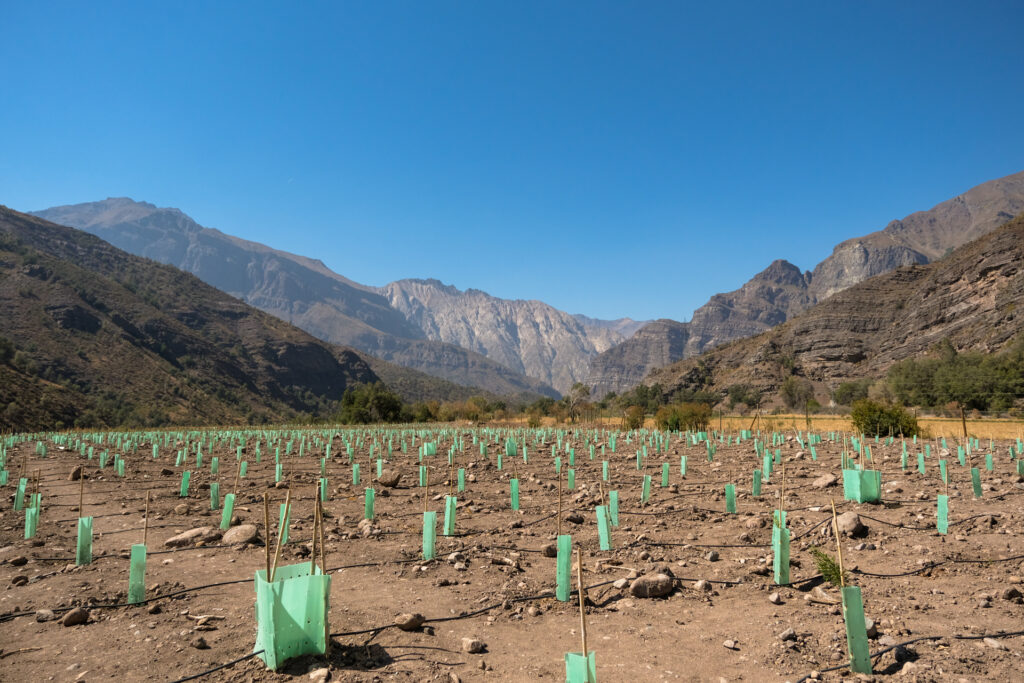
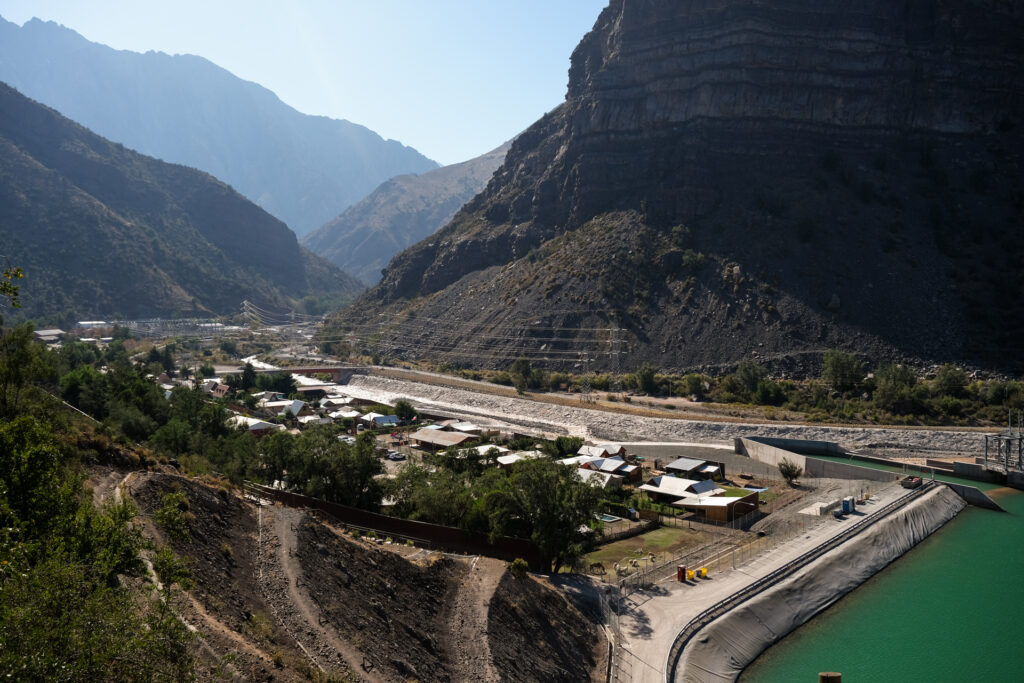
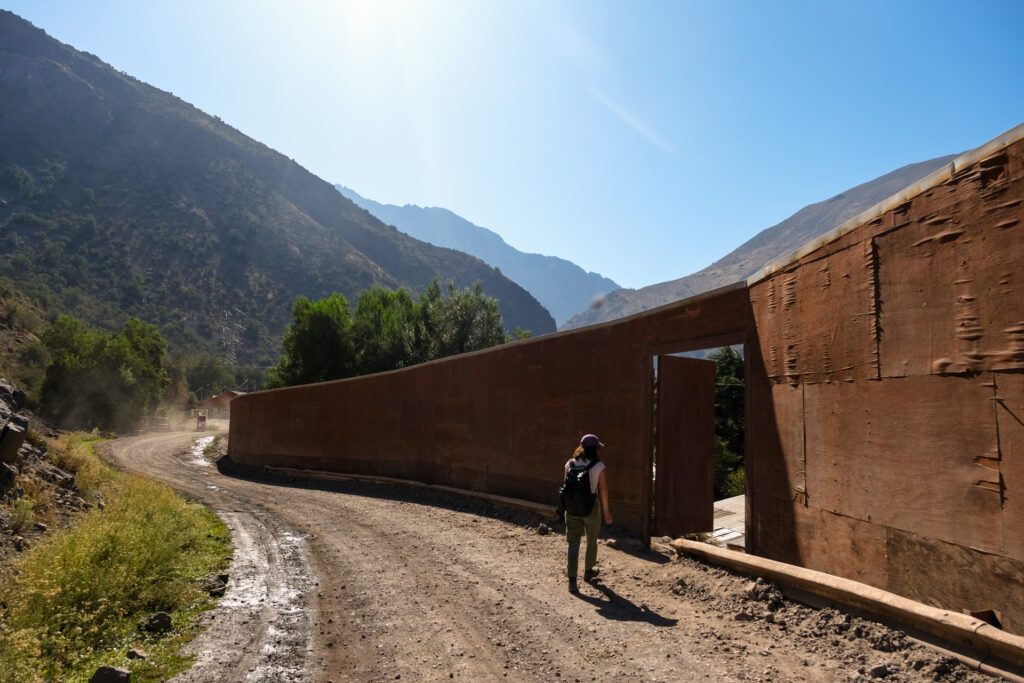
At the height of community backlash to the plant, media often showed the town of El Alfalfal surrounded by walls. AES Gener was ordered by the Chilean Ministry of the Environment to build these around El Alfalfal’s main town to shield the residents from sound and dust. “No Alto Maipo” activists cited these walls as an example of human rights violations. Today, the residents themselves say they don’t mind – the walls alleviated fears that the children would fall down the steep banks of the nearby Río Colorado, or be hurt by heavy machinery. Although the walls are currently being removed, the town is opting to keep a chain link fence around the perimeter.
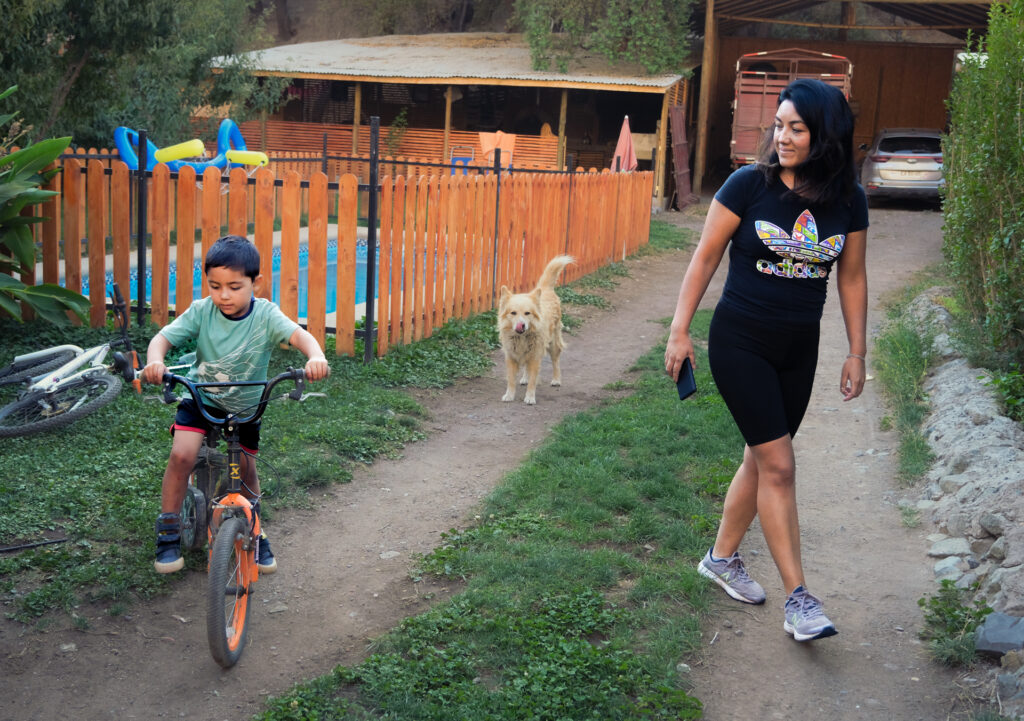
TRANSLATION: The first thing, as residents, that we asked of Alto Maipo was to get help with our land titles. They signed a thousand papers and made promises to the people. But in the end, for a company, what matters least is the people.
Jeni Gonzales, resident of El Alfalfal
In addition to the broken promises of restoring their land titles, residents like Jeni Gonzales say they have “not relished living in a construction zone” and mourn the loss of their soccer field, replaced by a water retention tank for the plant. But despite a decade of conflict, El Alfalfal residents say they are now largely at peace with Alto Maipo. Today, many El Alfalfal families are now employed by the AES Gener company as traditional ranching businesses have become less profitable due to the drought and glacial retreat.
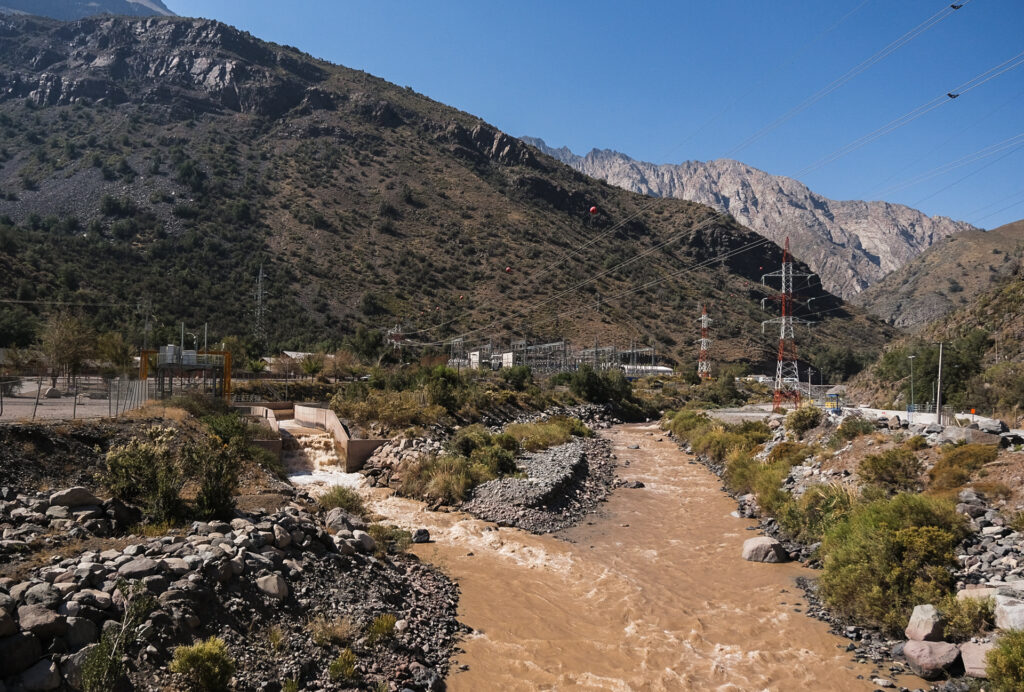

Beginning in 2017, Alto Maipo began a financial and operational nosedive due to rapidly decreasing energy prices, increasing construction costs, and decreased energy productivity due to drought and reduced glacier melt.
In December 2021, construction on the Alto Maipo plant was completed. In the same year, they filed for bankruptcy in U.S. courts. Banks and lenders began leaving the project, writing off the hundreds of millions of dollars in losses. Strabag, a European construction company contracted to do the majority of tunneling for the Alto Maipo project, restructured its financial agreement to become a shareholder and guarantor of the project. In 2023, a Chilean environmental regulator charged AES with failure to build sufficient infrastructure, and for skirting ecological due diligence.
As of July 2023, when this story was reported, Alto Maipo was not yet operational.
The reporting for this story was done in conjunction with a related story on mining and glaciers in the region, published in Atmos magazine.